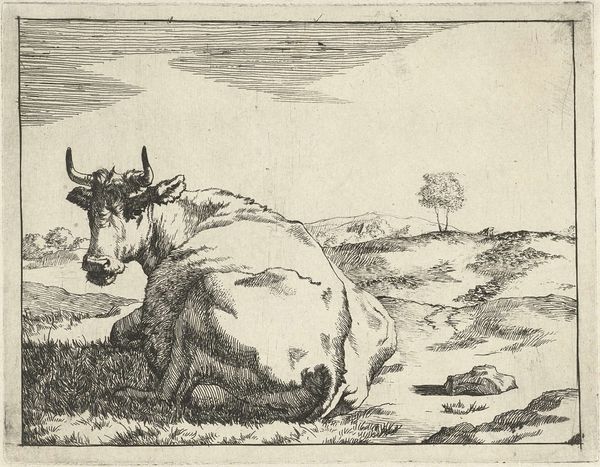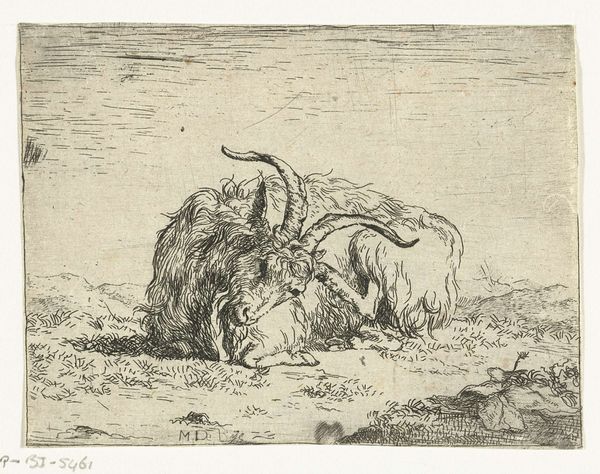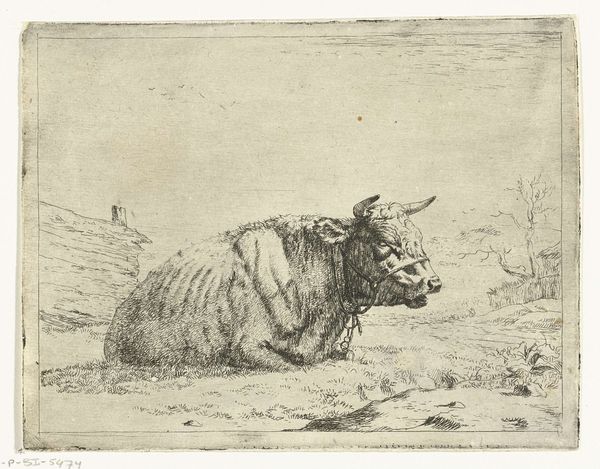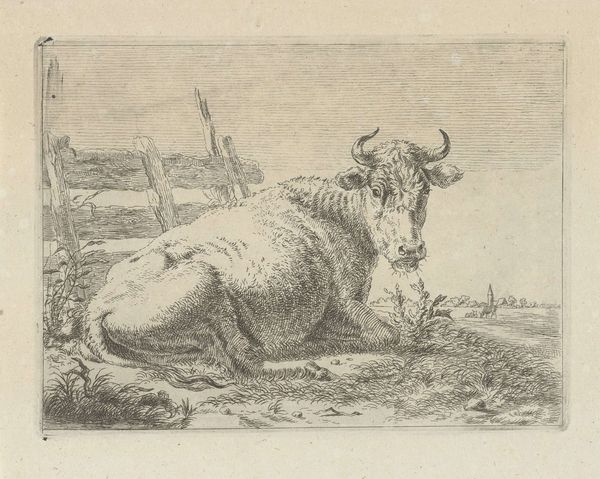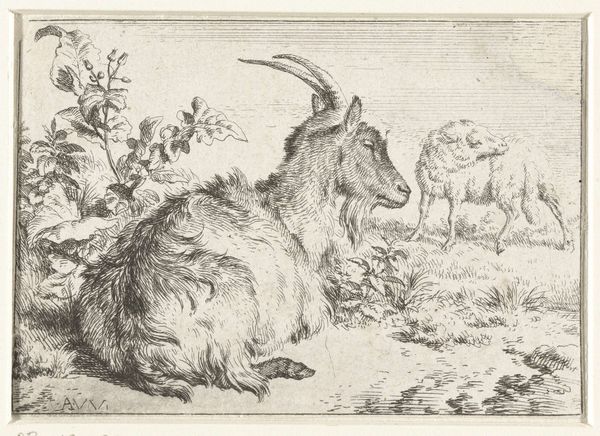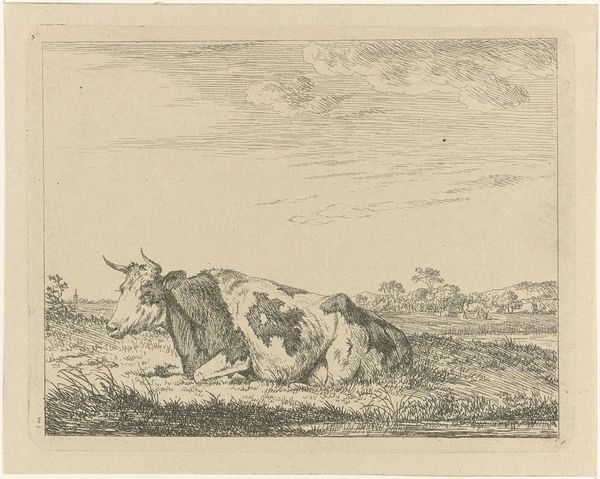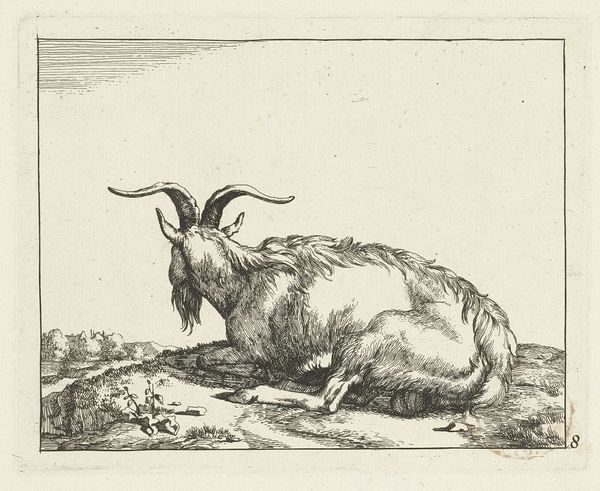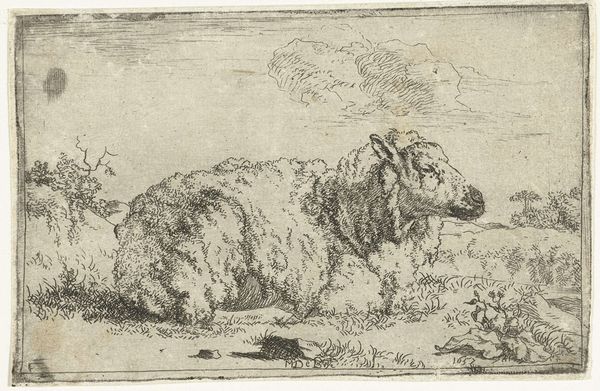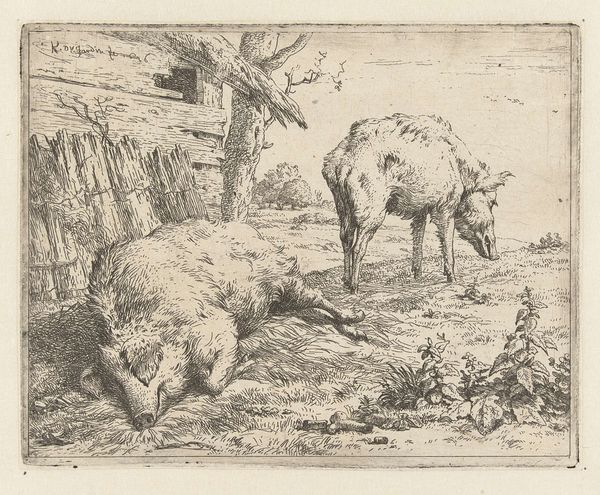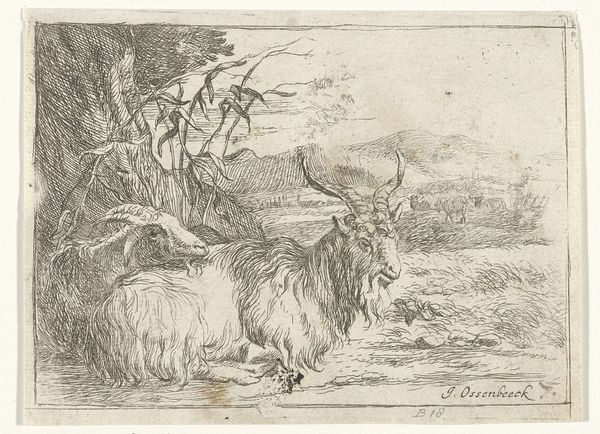
drawing, print, etching
#
drawing
#
animal
#
dutch-golden-age
# print
#
etching
#
landscape
Dimensions: height 117 mm, width 151 mm
Copyright: Rijks Museum: Open Domain
Marcus de Bye created this etching of a resting goat in the Netherlands sometime in the mid-17th century. Seventeenth-century Dutch art saw the rise of genre painting and landscape art, reflecting the growing mercantile class's interest in everyday life and the natural world. Animal studies gained popularity in this cultural climate. The depiction of animals was not just about aesthetics; it also reflected broader social and economic changes. The Dutch Republic was a major player in international trade, and its artists often celebrated the country’s prosperity. De Bye’s “Resting Goat” subtly comments on the contemporary relationship between humans and the natural world. The goat, rendered with such care and attention, becomes more than just livestock; it's an individual. To understand this piece better, researchers might look into the Dutch Republic's agricultural practices and the social status of animal imagery during that period. Art is always a product of its time, shaped by the institutions and values that surround it.
Comments
No comments
Be the first to comment and join the conversation on the ultimate creative platform.
